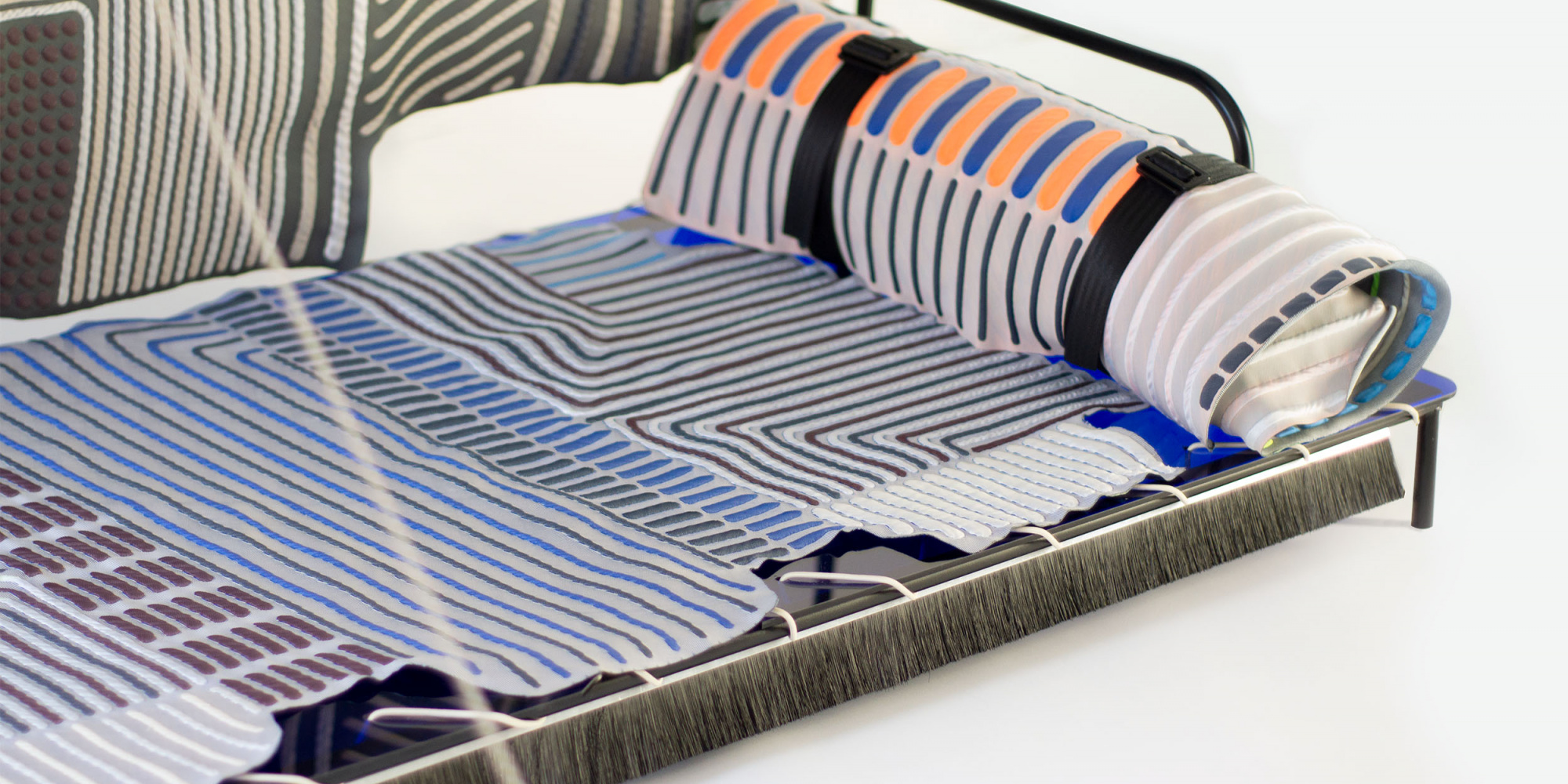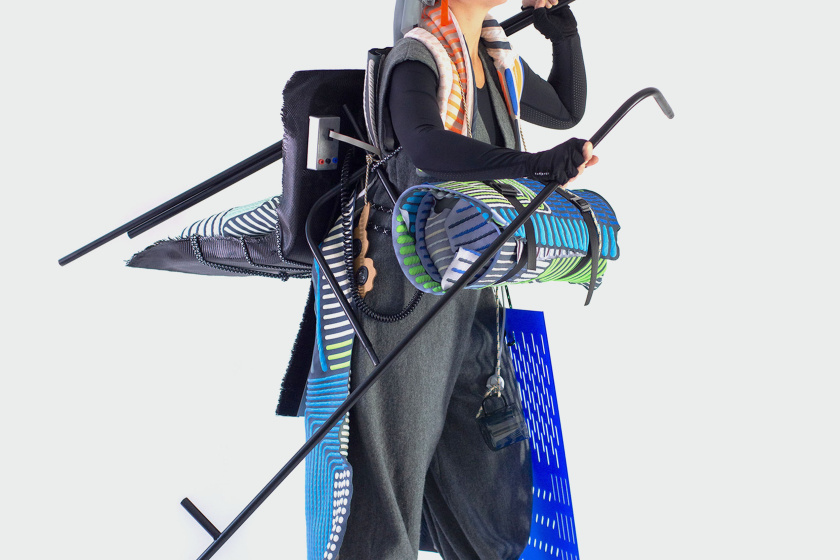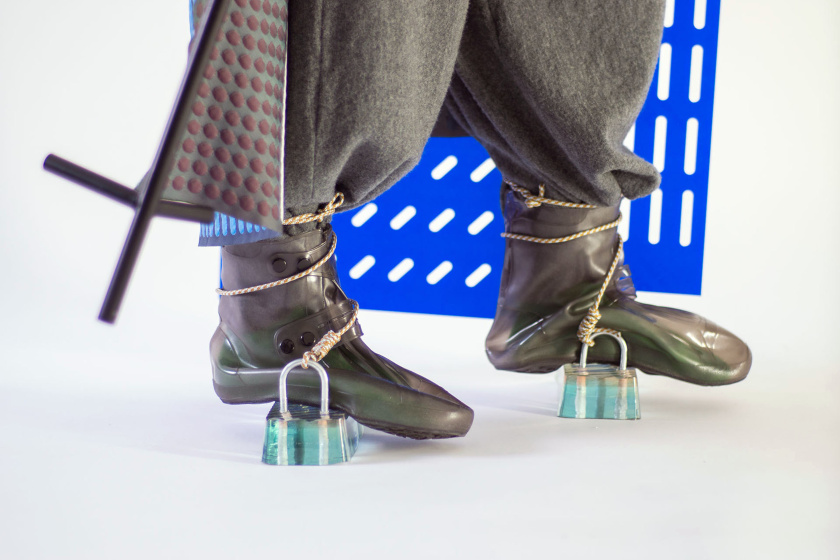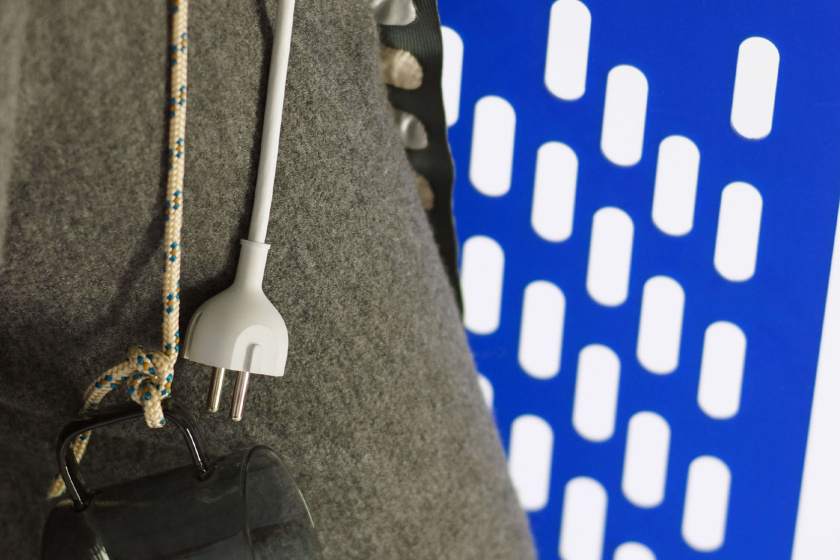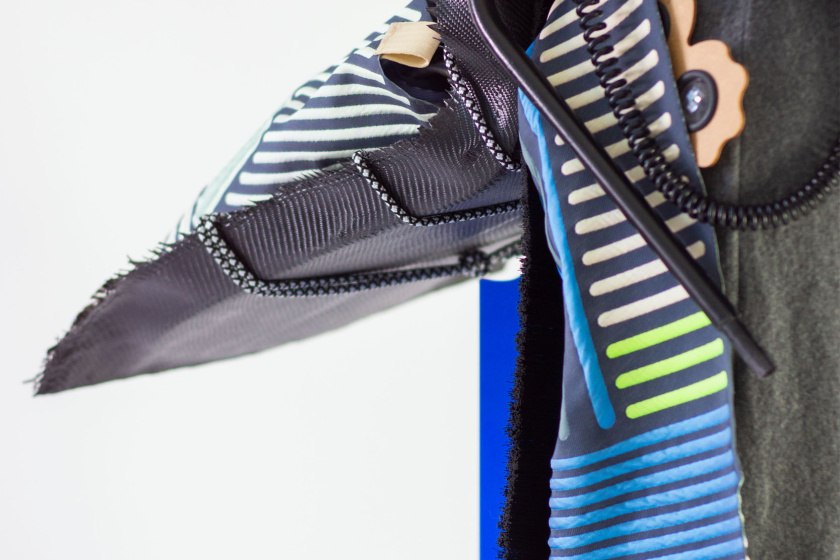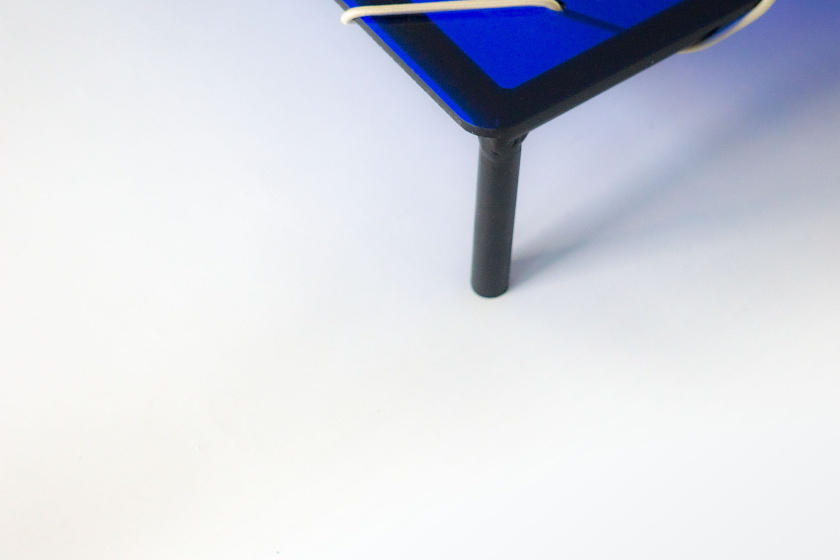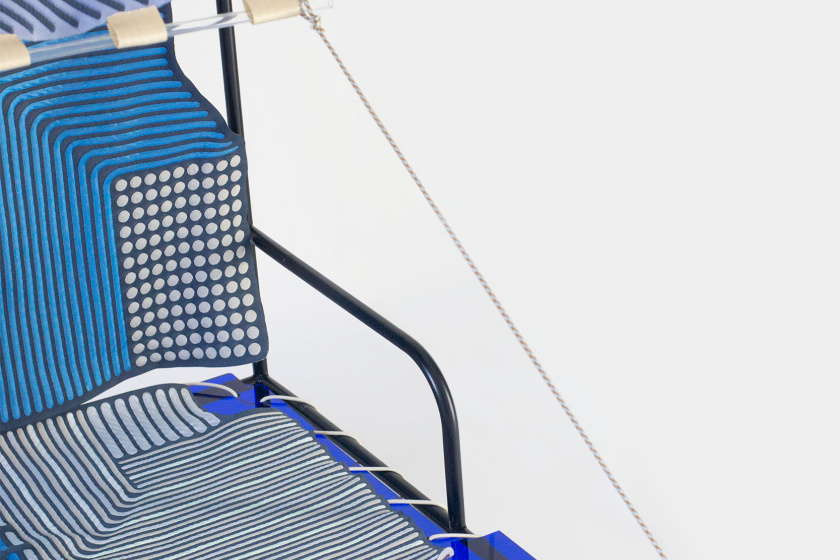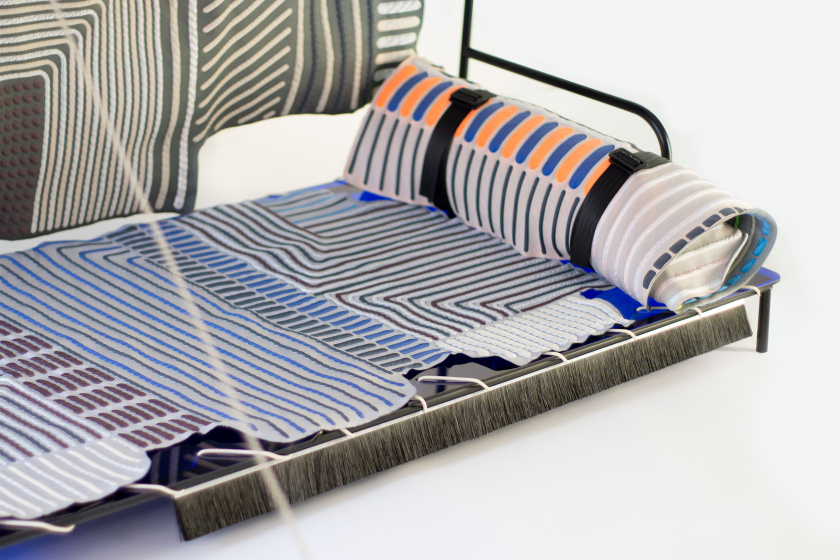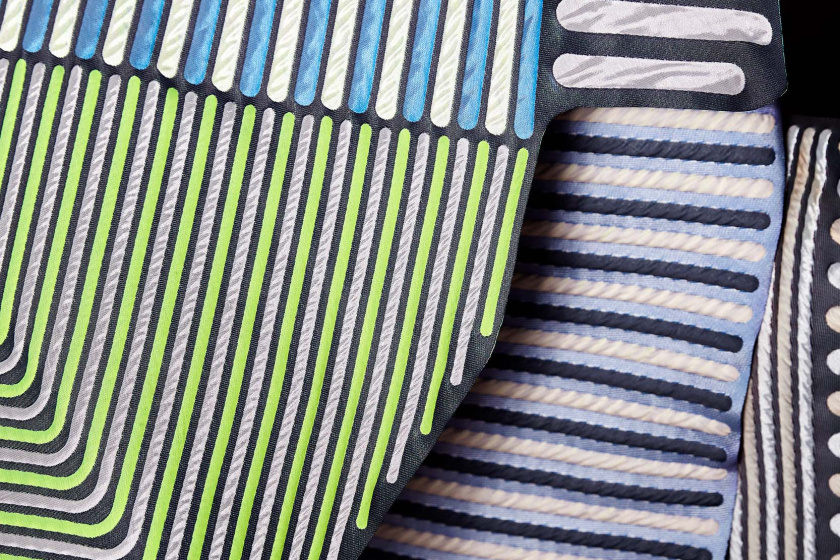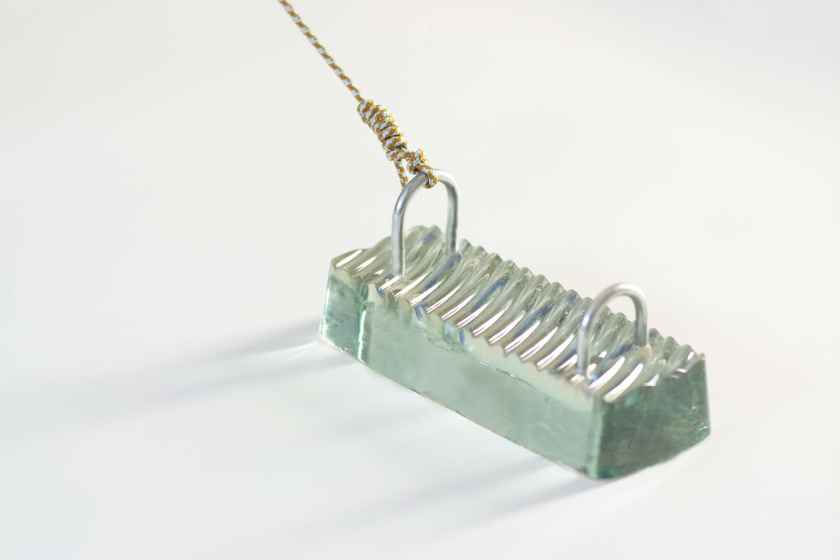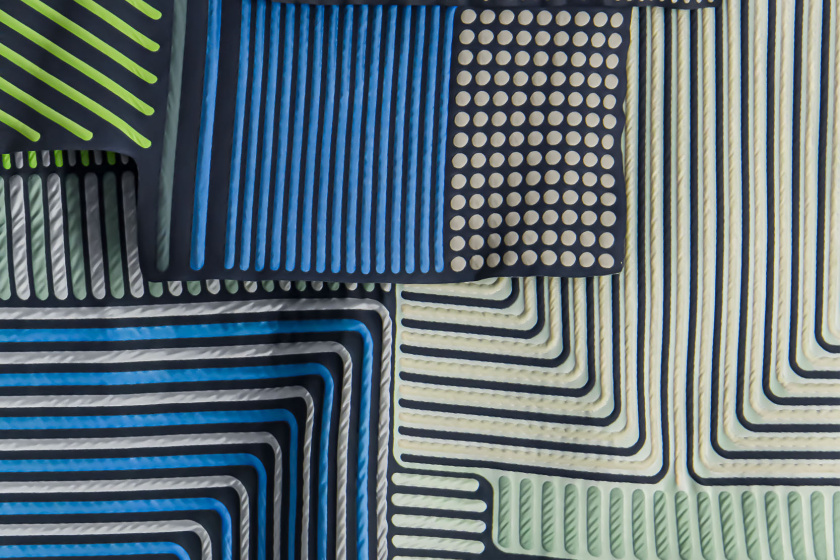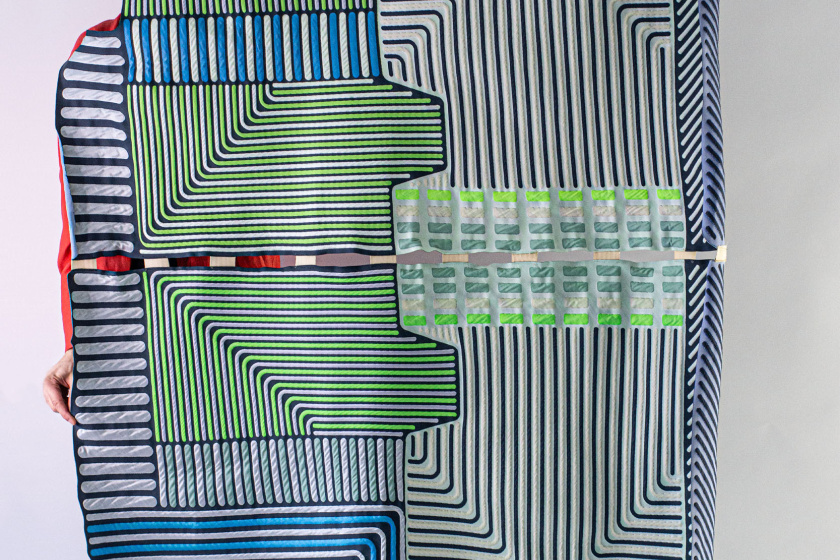Textiles + Sustainable future living = Tele-nomadic Sheltering Unit
The ‘new’ will be exchanged with the long-lasting, the inflexible with the flexible, the static with the moveable, the broken with repaired’.
This speculative work promotes a more elastic approach to living and examines the changing ways future generations will live, work and travel in the future city. Centered on fluidity and flexibility, the Tele-nomadic Sheltering Unit proposes an urban dwelling that is durable, moveable and designed to oppose the overconsumption associated with urban living. This reductionist and alternative way of living is designed with repairability and flexibility as core values, but also to be imbued with connectivity and symbolism, representing the figure of the future nomad carrying within itself a mix of different nomadic realities and their resulting materialities.
The whole idea of the Tele-nomadic Sheltering Unit is based on a modular structure which can be assembled and disassembled and carried with oneself. Repair and exchange are at the core of the concept. I imagine a future where we live in the open and collective and only own as much things as we can actually carry. The textiles allow different set ups and are shelter and protect from the natural environment. They are also meant to harvest electricity and through this enable to be fully self-sufficient. The small dot-matrix screen attached facilitates communication to other Tele-nomads near by due to cloud connection.
The work consists of a steel structure, two acrylic glass plates which are made from recycled plastic material, a patterned seating object, resin bricks and a small dot matrix-screen. Among these materials are 5 jacquard woven fabrics which were developed in collaboration with EE Exclusives in the Netherlands. Each textile has a different coloration on both sides and is created as a blanket quality. The 3D-textures of the textiles were created by using filling yarn and the graphic outlines of the textiles were created by using laser cut techniques.
